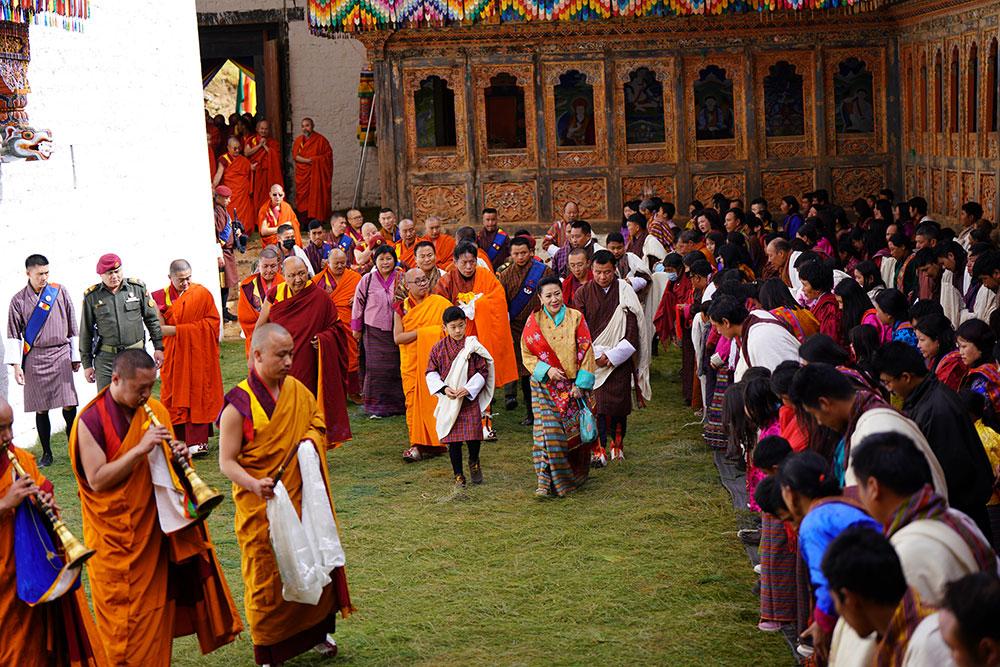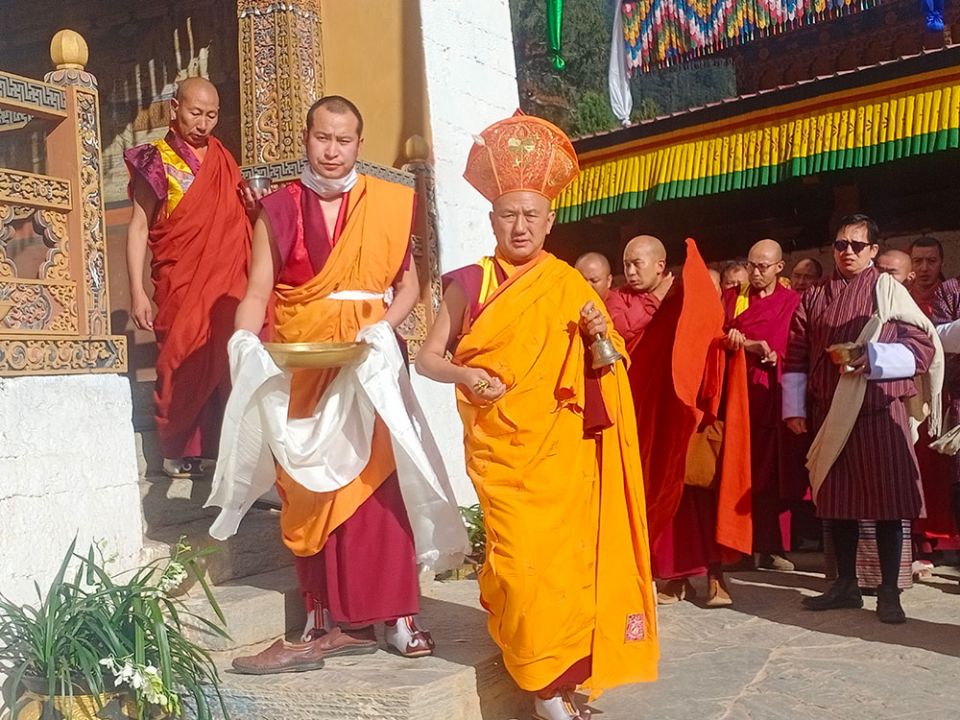
Her Majesty Gyalyum Tshering Yangdoen Wangchuck and His Royal Highness Gyalsey Jigme Namgyel graced the tashi rabney and sertog installation of the utse of Tango Monastery yesterday morning. The ceremony was presided over by the Dorji Lopon.
Tango Monastery, which was originally built in 1689 by the 4th Druk Desi Tenzin Rabgye, now serves as the Institute of Advanced Vajrayana Studies. Reconstruction of the Tango Utse started in December 2018, as the first phase of Tango Restoration Project implemented by the Department of Culture and Dzongkha Development. The reconstruction of the utse was completed in November this year.
gious site of great national and cultural importance. Besides being a historic landmark and an important school of Buddhism, the monastery houses ancient debri paintings of the Menlug tradition dating back to the 17th century. These paintings, using mineral pigments and intricate gold gildings, hold immense significance as a national and global cultural heritage. The reconstruction work was carried out with utmost care to ensure the structural integrity of this historic monument. The meticulous efforts culminated in the successful reintegration of 700 square meters of wall paintings, which were detached for preservation, back into the Utse. This pioneering achievement stands as a testament to Bhutan’s commitment to cultural preservation.

Chagri monastery was founded by Zhabdrung Rinpoche in 1620

The second phase of the project will continue with the reconstruction of the drasha, tshokhang, and kitchen.
Central Monastic Body’s Leytshog Lopon Sangay Dorji consecrated the recently restored Chagri Monastery yesterday.
Initiated in March 2016, the restoration project aimed to revive the monastery to its former glory and enhance living conditions for resident monks. Currently in its final phase, the project includes the construction of Zhabdrung Lhakhang, a guest house, a kitchen and a dining hall, along with the renovation of three Zimchungs.
Implemented by the Department of Culture and Dzongkha Development (DCDD) under the home ministry, the government-funded project received an allocation of Nu 296.9 million. Approximately Nu 250 million has been used thus far, with the completion scheduled for June next year.
Principal at the Chagri Meditation Centre, Ugyen Dorji expressed satisfaction, stating, “The newly renovated monastery is now in proper condition. We received quality materials for the renovation. It will benefit the country and all sentient beings.”
Dorji extended gratitude to His Majesty the King, The Fourth Druk Gyalpo, the Royal family, and the government for their generous support.
In June, His Royal Highness Gyalsey Jigme Namgyel and Her Majesty Gyalyum Tshering Yangdoen Wangchuck attended the sertog installation of the two-storied Utse. The top floor of Utse houses the Kudung Choeten of Yab Tenpai Nyima, a main nangten of the monastery.
Project Manager Kinzang Dorji from DCDD is confident about completing the remaining works on time, despite acknowledging the challenges. “While dismantling the old structure, there is no place to keep the debris, and we have to transport it to the base point of the monastery using a ropeway cable,” said Dorji.
All construction materials are transported through a ropeway cable from the base point. Workers travel daily from the base point camp, requiring a 30-minute journey to reach the monastery. The construction site’s limited space and steep slopes make it challenging to prepare a camp for workers.
“It is also difficult to get seasoned workers,” added Kinzang Dorji. Currently, there are 75 workers at the site, paid between Nu 520 and Nu 920 based on their skills, all of whom are Bhutanese from across the country.
Chagri Monastery, founded by Zhabdrung Ngawang Namgyel in 1620, holds significance as one of Bhutan’s key religious sites. Initially established with 30 monks in 1621, it now serves as the central Drubdey (retreat center) for Tango Shedra graduates and monks from the Dratshangs. Situated at an elevation of 2,850 meters above sea level, Chari Goenpa occupies a steep slope at the northern end of the Thimphu valley.












